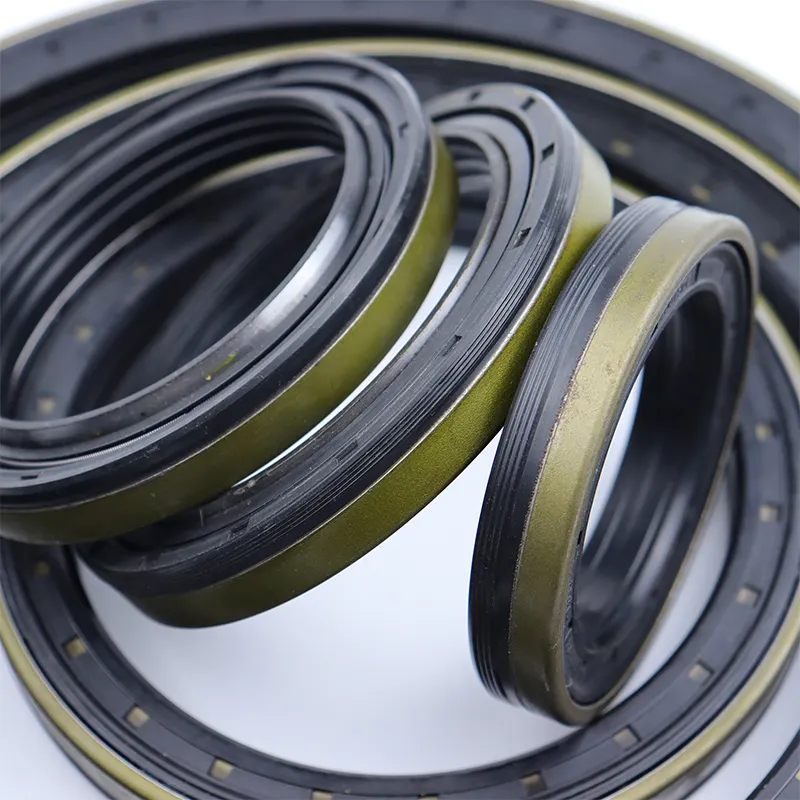ኅዳር . 26, 2024 22:10 Back to list
Hydraulic Cylinder Seal Maintenance and Repair Techniques for Improved Performance
Hydraulic Cylinder Seal Repair A Comprehensive Guide
Hydraulic systems play a crucial role in various industries, providing the necessary force for machinery to operate effectively. At the heart of these systems are hydraulic cylinders, which rely on seals to maintain pressure and ensure efficient operation. Over time, seals can wear out or become damaged due to factors such as contamination, temperature fluctuations, and general wear and tear. When this happens, understanding the repair process for hydraulic cylinder seals becomes essential for maintaining operational efficiency and preventing costly downtime.
Understanding Hydraulic Cylinder Seals
Hydraulic cylinder seals are specially designed components that prevent hydraulic fluid from leaking out of the cylinder while keeping contaminants from entering. They are typically made from materials like nitrile rubber, polyurethane, or fluoropolymer, which can withstand the high pressures and temperatures associated with hydraulic systems.
Seals in hydraulic cylinders serve multiple functions. They not only maintain pressure but also help guide the piston within the cylinder. There are several types of seals, including static seals, dynamic seals, and wear rings. Knowing the type of seal that needs repair is essential for a successful repair.
Common Causes of Seal Failure
Identifying the cause of seal failure is the first step in effective repair. The most common causes of hydraulic cylinder seal failure include
1. Contamination Dirt, dust, and other particles can enter the hydraulic system and damage the seals, leading to leaks. 2. Temperature Variations Extreme temperatures can degrade seals, making them brittle or causing them to swell, which impacts sealing efficiency. 3. Over-Pressure Exceeding the rated pressure of the hydraulic cylinder can cause seals to fail, leading to more significant mechanical issues. 4. Improper Installation If seals are not installed correctly, they may not function as intended, leading to premature failure. 5. Aging and Wear Over time, seals naturally wear out and lose their effectiveness, necessitating replacement.
Repair Process for Hydraulic Cylinder Seals
Repairing hydraulic cylinder seals requires careful attention to detail to ensure that the cylinder functions properly after the repair
. Here’s a step-by-step guidehydraulic cylinder seal repair

1. Disassembly Begin the repair process by safely disassembling the hydraulic cylinder. Always ensure that the system is depressurized to avoid any accidents. Remove any hoses, fittings, and other components connected to the cylinder.
2. Inspection Once disassembled, inspect the entire hydraulic cylinder for signs of damage or wear. Look for scratches, dents, or other deformities on the cylinder barrels and pistons. Assess the seals for signs of wear, such as cracks or deformation.
3. Clean the Components Thoroughly clean all components using a suitable solvent. This step is crucial to remove any contaminants that could lead to further issues after the repair.
4. Remove Old Seals Carefully remove old or damaged seals. This can usually be achieved using a seal puller or a small flat tool to avoid damaging the cylinder components.
5. Select New Seals Choose high-quality replacement seals that match the specifications of the original seals. Pay attention to the material, size, and type of seal to ensure compatibility.
6. Install New Seals Properly install the new seals, ensuring that they are seated correctly. Be gentle during this process to avoid damaging the seals or the cylinder itself.
7. Reassembly Once the new seals are in place, reassemble the hydraulic cylinder in the reverse order of disassembly. Ensure all components are tightened to the manufacturer's specifications.
8. Testing After reassembly, it’s essential to test the hydraulic cylinder. Reconnect the hoses and fittings, and gradually pressurize the system. Monitor for leaks, unusual noises, or performance issues. If any problems arise, disassemble the cylinder again to check for installation issues.
Conclusion
Repairing hydraulic cylinder seals is a vital skill that can greatly enhance the longevity and efficiency of hydraulic systems. By understanding the common causes of seal failure and following a systematic repair process, technicians can ensure that hydraulic cylinders operate at peak performance. Regular maintenance checks and timely repairs can prevent major breakdowns, ultimately saving time and money in industrial operations. With proper care and attention, the hydraulic systems that power machinery can continue to perform reliably for years to come.
-
The Trans-formative Journey of Wheel Hub Oil Seals
NewsJun.06,2025
-
Graphene-Enhanced Oil Seals: Revolutionizing High-Pressure Oil Sealing
NewsJun.06,2025
-
Future of Hydraulic Sealing: Advanced Intelligent TCN Oil Seals
NewsJun.06,2025
-
Don’t Let a Broken TCV Oil Seal Ruin Your Day
NewsJun.06,2025
-
Bio-Inspired Dust Seals for Better Sealing Performance
NewsJun.06,2025
-
Biodegradable and Sustainable Hydraulic Seal Materials
NewsJun.06,2025
-
Top Oil Seal Solutions for Your Industrial Needs
NewsMay.22,2025
Products categories
















